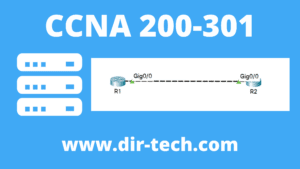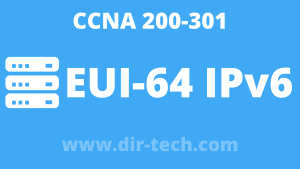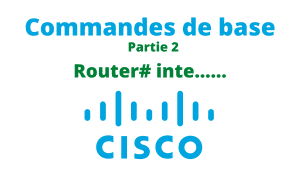These Cisco CCNA commands are a must for all network admins and those preparing to take the CCNA 200-301 certification! I am referring to the show…. command, which is generally used for network troubleshooting and also for finding configuration information on a router or switch.
The show…commands help you find any configuration information on a router or switch. Knowing how to use these CCNA commands is therefore essential to administer a company’s network and also to pass your CCNA 200-301 exam. From now on, there will be AMLs during associate and professional level exams. For more information, see this article on the Cisco website
Here are the top Cisco CCNA commands to know:
show running-config
The show running-config command, often abbreviated to show run, is the most commonly used command by network administrators. It provides you with the complete configuration report on a network device (router or switch).
The result of the show run command contains all configurations made on a router or switch. This can be IP address configuration information on interfaces, security information, routing protocols, VLANs, etc.
All this information helps you in troubleshooting a network and also to copy and save the configurations in a TXT file or other on your computer.
copy running-config startup-config
The copy running-config startup-config command allows you to save the configurations.
Remember that the startup configuration file, also called startup-config, is stored in the NVRAM of the device.
And the running configuration file, also called running-config is stored in RAM.
Thus, the copy running-config startup-config command copies the running-config file to the startup-config file.
The opposite, i.e. copy startup-config running-config allows to copy the startup-config file to the running configuration file.
The write command plays the same role as copy running-config startup-config! But during the test, it is not recommended to use the write command.
show interfaces
Show interfaces displays in detail all interface information of a router or switch. You can also use the shortcut sh inte to get the same results.
This command can be used to display detailed information about a specific interface, for example: show interfaces gigabitEthernet 0/0 .
show ip protocols
The show ip protocols command on a router displays the configured routing protocols and route statistics. This command is used to determine the routing protocols used on a device.
show ip route
show ip route on a router or switch L3 displays the routing table used to transmit data from one network to another.
This command will also tell you the routes learned by the L3 router or switch.
You will find in the results: directly connected routes, static routes, or routes learned by routing protocols like OSPF, EIGRP, RIP, BGP, etc.
The show ip route command is often used to identify and troubleshoot routing problems on an L3 router or switch.
Role and function of switches – CCNA 200-301 – Networks (dir-tech.com)
show cdp neighbors
The show cdp neighbors command on a Cisco router or switch displays information about Cisco devices connected to the device you are using.
It should be noted that the CDP protocol is Cisco proprietary, so it only works on Cisco equipment.
The information displayed by the command can be: the type of the equipment, its IP address, the interface connected to the neighbor, its identifier, etc.
Network administrators usually use this command to determine the neighbors of a device to discover the network topology.
show lldp neighbors
show lldp neighbors works in the same way as show cdp neighbors, except that the lldp is open, i.e. it also works on other manufacturers’ equipment. It is used to discover nearby network topologies.
LLDP is not enabled by default on Cisco devices. To enable LLDP on a Cisco device, use the lldp run command in global configuration mode.
show vlan brief
show vlan brief displays the information and status of VLANs on a device.
The results include the VLANS names, number, and interfaces assigned to the VLANs.
show interfaces trunk
To check the trunk on the different ports of a switch, use the show interfaces trunk command.
It displays the information of the VLANs authorized on each port in Trunk mode. The show interfaces trunk command only gives results if the trunk is configured on the ports of a switch.
show access-lists
The show access-lists command displays the access lists configured on a network device. If there is no list access configured on the equipment, the command does not display any results.
show ?
To go further and discover more commands, you can use ? after each command to get a list of all available options.
For example, show ? on a router gives this :
Router#show ? aaa Show AAA values access-lists List access lists arp Arp table cdp CDP information class-map Show QoS Class Map clock Display the system clock controllers Interface controllers status crypto Encryption module debugging State of each debugging option dhcp Dynamic Host Configuration Protocol status dot11 IEEE 802.11 show information file Show filesystem information flash: display information about flash: file system flow Flow information frame-relay Frame-Relay information history Display the session command history hosts IP domain-name, lookup style, nameservers, and host table interfaces Interface status and configuration ip IP information ipv6 IPv6 information license Show license information line TTY line information lldp LLDP information logging Show the contents of logging buffers login Display Secure Login Configurations and State mac-address-table MAC forwarding table ntp Network time protocol parser Show parser commands policy-map Show QoS Policy Map pppoe PPPoE information privilege Show current privilege level processes Active process statistics protocols Active network routing protocols queue Show queue contents queueing Show queueing configuration running-config Current operating configuration secure Show secure image and configuration archive --More--
Press the ENTER key on your keyboard to scroll through the available options. In front of each option, a description allowing you to know the utility of the command.



